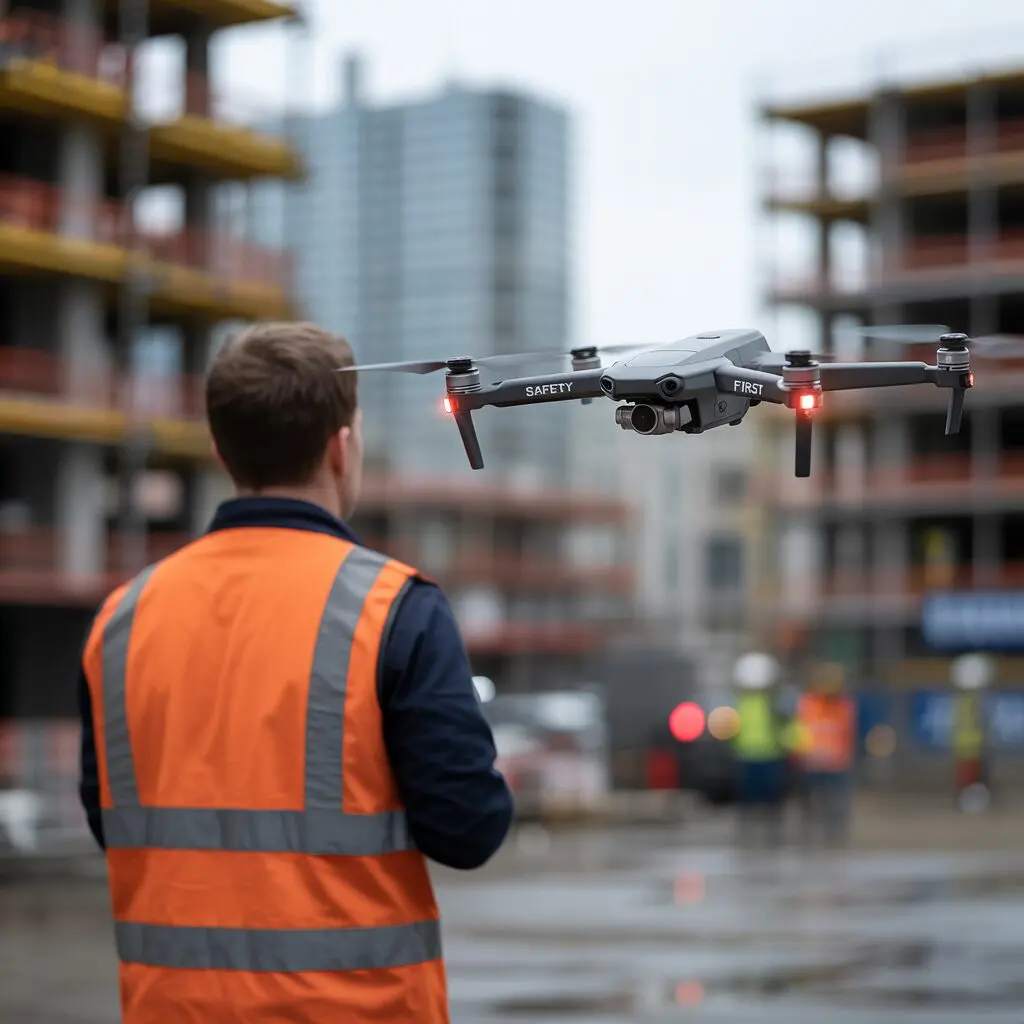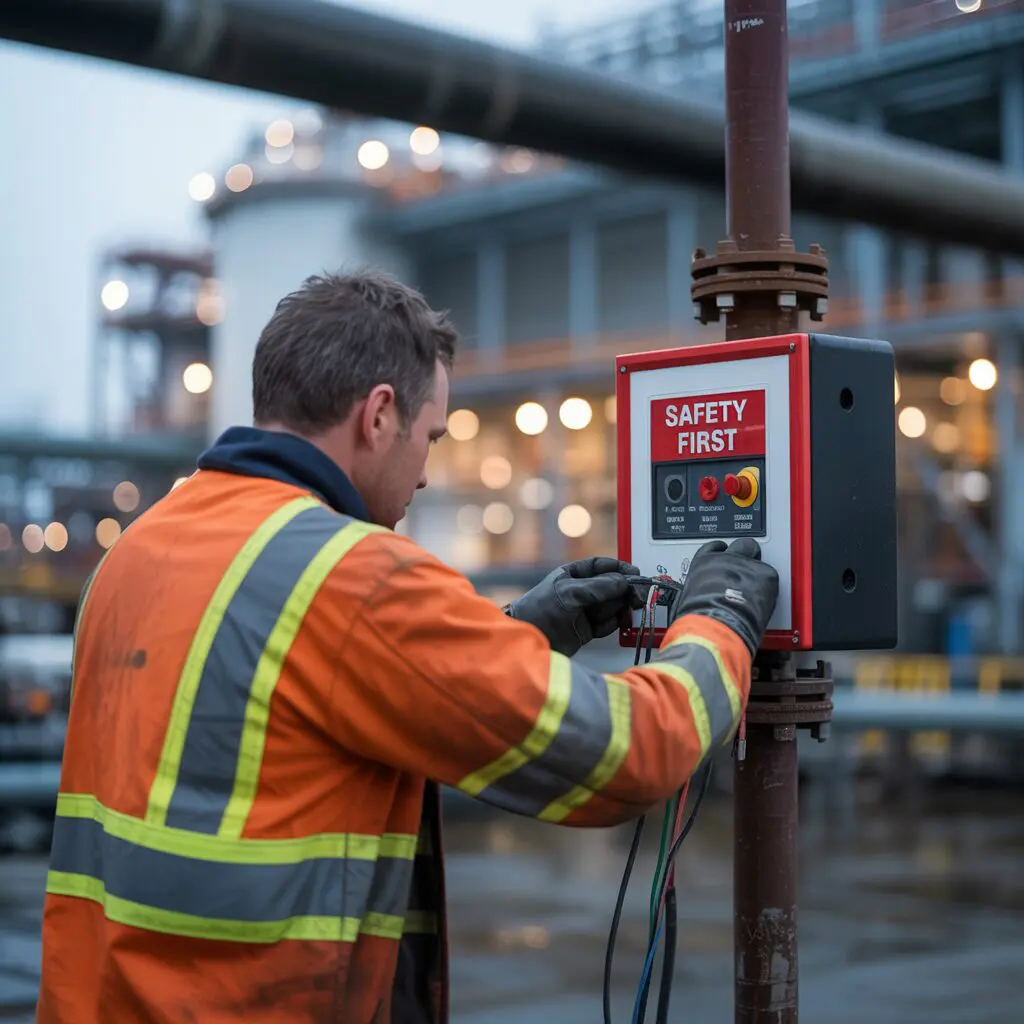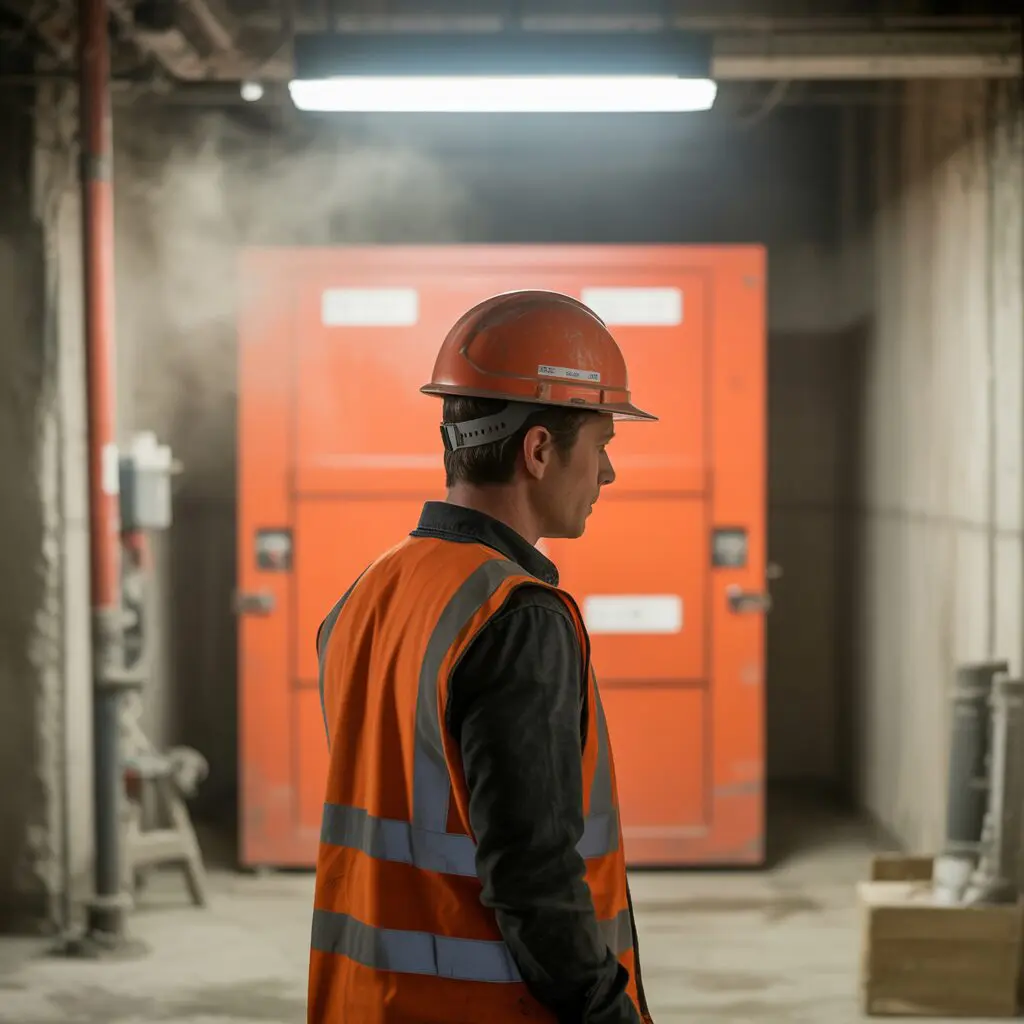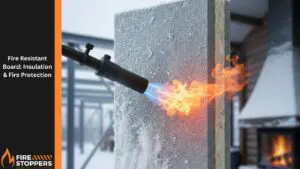As one of Dublin’s leading fire safety companies, it’s our job to stay ahead of advancements in fire safety technology. The realm of fire safety is experiencing a revolutionary transformation, moving far beyond traditional, standalone smoke detectors and basic fire extinguishers. Today, a new generation of fire safety technologies is emerging, offering unprecedented levels of protection, intelligence, and connectivity. From sophisticated wireless fire alarm systems that eliminate the need for cumbersome wiring to smart detection devices powered by artificial intelligence, these advancements are making our homes, workplaces, and public spaces in Ireland safer than ever before. This article will explore these latest breakthroughs, from intelligent fire alarm systems to innovative fire suppression methods. Discover how these advancements are making our environments safer and why staying informed about modern fire protection is crucial for everyone. This comprehensive guide will delve into the specifics of how these new systems work, their benefits over traditional methods, and how they are becoming more accessible and cost-effective, with a special focus on the Irish context. We’ll examine everything from the role of the Internet of Things (IoT) in creating interconnected safety networks to the latest in fire curtain and door technology, providing a complete picture of the future of fire safety.
Table of Contents
- Why Are Advancements in Fire Safety Technology More Important Than Ever in Ireland?
- What Are the Key Differences Between Traditional and Modern Fire Detection Systems?
- How Do Wireless Fire Alarm Systems Offer Enhanced Protection and Flexibility in Irish Buildings?
- What Makes Smart Fire Detection Systems “Smart”?
- Are Modern Fire Extinguishers More Effective Than Older Models?
- How Have Fire Curtains and Fire Doors Evolved with New Technology?
- What Role Does the Internet of Things (IoT) Play in Modern Irish Fire Safety?
- How is AI Making Fire Detection Faster and More Accurate?
- What Do Current Irish Fire Safety Regulations Say About These New Technologies?
- How Are These Modern Fire Protection Solutions Becoming More Accessible in Ireland?
- Key Takeaways:
- Frequently Asked Questions (FAQ) for the Irish Market
- Are wireless fire alarms compliant with fire safety regulations in Ireland?
- I own an apartment in a building constructed in the 2000s with potential fire safety issues. Is there any government help available?
- What are the main fire risks in Irish homes?
- How can I find a reputable installer for a new fire alarm system in Ireland?
- Where can I find the latest official guidance on fire safety for my building in Ireland?
Why Are Advancements in Fire Safety Technology More Important Than Ever in Ireland?
The landscape of modern construction and our increasing reliance on electronic devices present new and complex fire risks. In this context, advancements in fire safety technology are not just a matter of convenience; they are a critical necessity for ensuring the well-being of individuals and the protection of property across Ireland. The proactive approach to fire safety offered by these innovative technologies is a significant leap forward from the reactive nature of older systems. By providing earlier and more accurate warnings, modern systems allow for more timely and effective emergency response, which can dramatically reduce the devastating impact of a fire. The integration of these new technologies also plays a crucial role in maintaining compliance with evolving Irish fire safety regulations, which are continually updated to address new challenges and incorporate the latest safety solutions.
The importance of these technological strides is further underscored by the potential for improved safety in a wide range of Irish environments, from sprawling industrial complexes to multi-storey residential buildings. The enhanced capabilities of modern fire detection systems, such as the ability to distinguish between different types of fire and reduce the frequency of false alarms, contribute to a more reliable and trustworthy fire safety infrastructure. As our world becomes more interconnected, the demand for smarter and more responsive safety systems will only continue to grow, making the ongoing development and adoption of these advanced fire safety technologies more critical than ever before. This proactive and technologically driven approach to fire safety is fundamental to creating a safer future for all in Ireland.
The evolution of fire safety is not merely about developing more sensitive detectors or more powerful suppression systems; it is about creating a holistic and integrated ecosystem of fire protection. This comprehensive approach to fire safety ensures that every component, from the initial detection of a potential threat to the final stages of evacuation and emergency response, works in seamless coordination. The latest fire safety technologies are designed to provide real-time data and actionable insights to building managers and emergency services, such as the Dublin Fire Brigade, enabling them to make more informed decisions during a crisis. This level of sophistication, which was once the domain of high-security facilities, is now becoming increasingly accessible for a broader range of applications, heralding a new era of enhanced building safety and personal security across Ireland.

What Are the Key Differences Between Traditional and Modern Fire Detection Systems?
The divergence between traditional and modern fire detection systems represents a paradigm shift in our approach to fire safety. Traditional fire alarm systems have long been the standard, operating on a conventional, zoned basis where multiple devices are connected to a single circuit. When a detector on this circuit is activated, the control panel indicates that a fire has been detected within that specific zone, but it does not pinpoint the exact location of the device. This can lead to delays in identifying the source of the fire and initiating an appropriate response. In contrast, modern fire detection systems, particularly addressable systems, provide a much higher level of detail and accuracy. Each detector in an addressable system has a unique address, allowing the control panel to identify the precise location of any activation. This capability for faster and more accurate detection is a cornerstone of modern fire protection.
Another significant difference lies in the intelligence and analytical capabilities of the systems themselves. Traditional smoke detectors typically operate on a simple binary principle, triggering an alarm when a certain threshold of smoke is detected. This can often lead to a high rate of false alarms, caused by non-hazardous sources such as steam or cooking fumes. Modern fire detection systems, on the other hand, often incorporate advanced sensors and algorithms that can differentiate between various types of particles in the air. This smart fire detection technology, offered by suppliers in Ireland, can analyze the data it collects to determine the likelihood of an actual fire, significantly reducing the risk of false alarms and the associated disruption and complacency they can breed.
Furthermore, the connectivity and integration capabilities of modern fire detection systems are far superior to their traditional counterparts. Conventional fire alarm systems are often standalone, with limited ability to communicate with other building management systems. In contrast, modern systems are frequently designed to integrate seamlessly with a building’s overall safety and management infrastructure. This allows for a coordinated response to a fire emergency, such as automatically shutting down ventilation systems to prevent the spread of smoke, unlocking fire doors to facilitate evacuation, and notifying emergency services. The use of IoT technology in these systems further enhances their connectivity, enabling real-time monitoring and control from remote locations. This interconnected approach to fire safety provides a more comprehensive and robust level of protection than what is possible with traditional, isolated systems.
How Do Wireless Fire Alarm Systems Offer Enhanced Protection and Flexibility in Irish Buildings?
The advent of wireless fire alarm systems has marked a significant turning point in the field of fire safety, offering a level of flexibility and ease of installation that was previously unattainable with traditional wired systems. The primary advantage of wireless systems lies in their elimination of the need for extensive and often disruptive wiring. In Ireland’s many historic and older buildings, installing new wiring can be a complex and costly undertaking that may compromise the architectural integrity of the structure. Wireless fire alarm systems, which must comply with the Irish Standard I.S. 3218, circumvent this issue by using radio frequency to communicate between the detectors, control panels, and other components. This not only simplifies the installation process but also makes it possible to provide robust fire detection in buildings where traditional wired systems would be impractical or prohibitively expensive.
Beyond the benefits of ease of installation and flexibility, wireless fire alarm systems also offer a high degree of reliability and performance. Modern wireless systems are designed with sophisticated technology to ensure that signals are transmitted and received without interference, and they often include features such as signal strength indicators and self-testing capabilities to ensure that the system remains operational at all times. The batteries used in these systems have long lifespans, and the control panel will provide ample warning when they need to be replaced. This ensures that the fire alarm system remains a reliable and effective means of fire protection. The scalability of wireless systems is another key advantage; they can be easily expanded or reconfigured to accommodate changes in building layouts or requirements without the need for major rewiring projects, a significant benefit for growing Irish businesses.
The enhanced protection offered by wireless fire alarm systems extends to their ability to be integrated with other smart building technologies. These systems can be connected to a central building management system, allowing for a coordinated and automated response to a fire event. For example, in the event of a fire, the system can automatically alert the fire department, shut down HVAC systems to prevent smoke from spreading, and activate emergency lighting to guide occupants to safety. This level of integration and automation can significantly improve response times and the overall effectiveness of the evacuation and emergency response plan. As wireless technology continues to advance, wireless fire alarm systems are poised to become the new standard in fire safety, offering a more cost-effective, adaptable, and comprehensive approach to protecting lives and property across Ireland.

What Makes Smart Fire Detection Systems “Smart”?
The “smart” in smart fire detection systems refers to their ability to go beyond the simple detection of smoke and heat. These intelligent systems leverage advanced technologies such as multi-sensor detectors, artificial intelligence (AI), and machine learning to provide a more nuanced and accurate assessment of potential fire threats. Unlike traditional smoke detectors that can be easily triggered by non-hazardous sources, leading to a high number of false alarms, smart fire detection systems can analyze a wide range of environmental data to differentiate between an actual fire and a false alarm. This capability is a significant advancement in fire safety, as it helps to prevent the complacency and disruption that can result from frequent false alarms.
The intelligence of these systems is further demonstrated by their ability to communicate and share information with other devices and systems within a building. Through the use of the Internet of Things (IoT), smart fire detection systems can connect to a central hub or building management system, providing real-time data and alerts to building managers and emergency responders. This connectivity allows for a more coordinated and effective response to a fire emergency. For example, if a fire is detected in a specific area, the system can automatically trigger a range of actions, such as activating fire suppression systems, closing fire doors to contain the fire, and providing clear evacuation instructions to occupants. This level of automation and integration is a key feature of what makes these systems “smart.”
Moreover, smart fire detection systems are often capable of self-diagnosis and predictive maintenance. They can continuously monitor their own performance and report any issues or potential failures to the building management team. This proactive approach to maintenance ensures that the fire safety system remains fully operational and reliable at all times. The ability of these systems to learn and adapt over time, through the use of AI and machine learning, also contributes to their “smart” designation. By analyzing data from past events, both real and false alarms, the system can refine its algorithms to become even more accurate and effective at detecting actual fire conditions. This continuous improvement cycle is a hallmark of smart technology and is a key driver of the ongoing advancements in fire safety.
Are Modern Fire Extinguishers More Effective Than Older Models?
While the fundamental principles of fire suppression have remained consistent over the years, modern fire extinguishers have seen significant advancements in their design, effectiveness, and user-friendliness. One of the most notable improvements is the development of new and more efficient extinguishing agents. For example, there are now specialized extinguishers designed to tackle specific types of fire, such as those involving lithium-ion batteries, which are becoming increasingly common in our modern world. These new agents are not only more effective at extinguishing specific types of fire but are also often more environmentally friendly than the chemical agents used in older models.
In addition to the development of new extinguishing agents, there have also been improvements in the design and construction of the extinguishers themselves. Modern fire extinguishers are often lighter and more ergonomic than their predecessors, making them easier for a wider range of people to handle and operate effectively in an emergency. They also frequently feature clearer and more intuitive instructions, which can be crucial in a high-stress situation. These design improvements, while seemingly small, can make a significant difference in the successful extinguishment of a small fire before it has a chance to spread.
Furthermore, the integration of smart technology is beginning to make its way into the world of fire extinguishers. There are now “smart” fire extinguishers that are equipped with sensors and communication capabilities. These devices can monitor their own pressure and status, and they can send an alert to a central system if they have been used or tampered with. This ensures that the extinguishers are always ready for use and that they are replaced or refilled promptly after being discharged. Knowing when to replace a fire extinguisher is a key part of any building’s safety plan. While not yet as widespread as other smart fire safety technologies, the development of these intelligent fire extinguishers is another example of how modern technology is being leveraged to enhance our overall fire protection capabilities.

How Have Fire Curtains and Fire Doors Evolved with New Technology?
Fire curtains and fire doors have long been essential components of a building’s passive fire protection system, designed to compartmentalize a fire and prevent its spread. Traditionally, these have been relatively simple, albeit robust, physical barriers. However, recent advancements in technology have led to the development of more sophisticated and effective fire curtains and fire doors that offer enhanced levels of protection and functionality. One of the key innovations in this area is the integration of these systems with a building’s central fire alarm system. This allows for the automatic deployment of fire curtains and the closing of fire doors in the event of a fire, creating a rapid and effective barrier to the spread of smoke and fire.
The materials used in the construction of fire curtains and doors have also seen significant improvements. Modern fire curtains are often made from lightweight, flexible, and highly fire-resistant fabrics that can be discreetly concealed in the ceiling and deployed quickly when needed. These curtains can provide a fire-rated barrier for a specified period, allowing occupants more time to evacuate and giving firefighters a safer environment in which to work. Similarly, modern fire doors are often equipped with advanced seals that expand when exposed to high temperatures, creating a more effective barrier against the passage of smoke and toxic gases. Regular checks using a fire door inspection checklist are vital.
Furthermore, the evolution of these systems has been driven by a greater understanding of fire dynamics and human behavior during a fire emergency. This has led to the development of more intelligent control systems that can tailor the deployment of fire curtains and the operation of fire doors to the specific circumstances of the fire. For example, in a large open-plan building, fire curtains can be deployed in a phased manner to create a protected escape route for occupants. This level of dynamic control, which is made possible by the integration of these systems with modern fire detection technology, represents a significant step forward in our ability to manage fire emergencies and ensure building safety through effective fire compartmentation.
What Role Does the Internet of Things (IoT) Play in Modern Irish Fire Safety?
The Internet of Things (IoT) is playing an increasingly pivotal role in the evolution of modern fire safety in Ireland, transforming traditional, standalone systems into interconnected networks that offer unprecedented levels of intelligence and control. The fundamental concept of IoT in fire safety is the connection of various fire detection and suppression devices to the internet, allowing them to communicate with each other and with a central control platform. This connectivity enables the collection and analysis of real-time data from a wide range of sensors, providing a more comprehensive and accurate picture of a building’s fire safety status. This IoT fire ecosystem is at the heart of the modern approach to fire safety, particularly in critical infrastructure like data centres.
One of the most significant benefits of IoT in fire safety is the ability to monitor and manage systems remotely. Building managers and fire safety professionals can access real-time data from fire detectors, control panels, and other devices from any location with an internet connection. This allows for instant notification of any potential fire threats, as well as the ability to remotely diagnose system faults and schedule maintenance. This remote management capability is particularly valuable for large or complex buildings, such as those found in Dublin’s growing technology sector, as it allows for a more efficient and effective approach to fire safety management. The real-time data provided by these IoT systems is invaluable for making informed decisions during fire emergencies.
Furthermore, the integration of IoT technology enables a more coordinated and automated response to a fire. When a fire is detected, the IoT-enabled fire alarm system can automatically trigger a range of pre-programmed actions, such as alerting the emergency services, activating fire suppression systems, shutting down ventilation to prevent the spread of smoke, and providing clear and dynamic evacuation guidance to occupants. This level of automation can significantly reduce response times and improve the overall effectiveness of the emergency response. The comprehensive safety offered by the Internet of Things is a key driver in the ongoing advancement of fire safety solutions, making our buildings smarter and safer than ever before.

How is AI Making Fire Detection Faster and More Accurate?
Artificial intelligence (AI) is at the forefront of the latest advancements in fire detection technology, offering the potential to make fire detection systems faster, more accurate, and more reliable than ever before. One of the key applications of AI in this field is in the development of advanced algorithms that can analyze data from multiple sensors to distinguish between a real fire and a false alarm. These AI-powered systems can learn from past events, both actual fires and false alarms, to continuously refine their detection capabilities. This ability to learn and adapt is a significant advantage over traditional fire detection systems, which rely on fixed thresholds and are more prone to nuisance alarms.
AI is also being used to analyze video footage from surveillance cameras to detect the presence of fire in its earliest stages. These AI-powered video fire detection systems can identify the visual signatures of smoke and flames, often before traditional smoke detectors would be activated. This early detection capability can be crucial in preventing a small fire from escalating into a major incident. The use of AI in this context is particularly valuable in large open spaces, such as warehouses and atriums, where traditional smoke detectors may be less effective.
Furthermore, AI can be used to predict and assess fire risk based on a wide range of data sources, including historical fire data, weather patterns, and building characteristics. This predictive analytics capability can help building owners and managers to identify areas of high risk and implement proactive fire prevention measures. The combination of faster and more accurate detection, early warning through video analytics, and predictive risk assessment makes AI a powerful tool in the ongoing effort to improve fire safety and protect lives and property.
What Do Current Irish Fire Safety Regulations Say About These New Technologies?
Fire safety regulations in Ireland are constantly evolving to keep pace with the latest technological advancements and our growing understanding of fire risk. As new and more effective fire safety technologies become available, these regulations, primarily governed by the Building Regulations 1997–2022 (Part B: Fire Safety), are updated to encourage or, in some cases, mandate their use. The adoption of modern fire safety solutions is often driven by the need for compliance with these updated fire safety regulations. For example, many jurisdictions now have specific requirements for the installation of addressable fire alarm systems in certain types of buildings, recognizing the significant safety benefits they offer over traditional, non-addressable systems. The National Standards Authority of Ireland (NSAI) also publishes standards like I.S. 3218, which covers the planning, design, installation, and maintenance of fire detection and alarm systems.
The increasing prevalence of wireless fire alarm systems is also being reflected in Irish fire safety regulations. While there was initially some skepticism about the reliability of wireless technology, modern wireless systems have proven to be highly robust and effective. As a result, regulatory bodies have established clear standards and guidelines, such as those within I.S. 3218, for the design, installation, and maintenance of wireless fire alarm systems, making them a viable and compliant option for a wide range of applications, including many of Ireland’s older buildings. Compliance with fire safety regulations is a critical aspect of building management, and staying informed about the latest requirements is essential for ensuring the safety of occupants.
Furthermore, the growing importance of integration and connectivity in fire safety is being recognized in the latest safety standards. There is a growing emphasis on the need for fire alarm systems to be able to communicate with other building management systems, such as HVAC and access control systems, to facilitate a coordinated and effective response to a fire emergency. Recent updates to Technical Guidance Document B also reflect the need to address changes in building design, new materials, and global events to enhance fire safety. As smart building technology becomes more widespread in Ireland, it is likely that fire safety regulations will continue to evolve to incorporate the capabilities of these innovative technologies, further driving the adoption of a more holistic and integrated approach to fire safety.
How Are These Modern Fire Protection Solutions Becoming More Accessible in Ireland?
While the most advanced fire safety technologies were once reserved for high-risk or high-value environments, they are now becoming increasingly accessible and cost-effective for a broader range of applications in Ireland. This is due to a number of factors, including the falling cost of the technology itself, the increasing demand for improved safety, and the development of more scalable and flexible solutions from Irish suppliers. The development of wireless fire alarm systems, for example, has significantly reduced the installation costs associated with traditional wired systems, making them a more affordable option for a wider range of buildings undergoing fire upgrade works.
The scalability of modern fire protection solutions is another key factor in their growing accessibility. Many modern fire alarm systems are designed to be modular, allowing building owners to start with a basic system and then add more features and devices as their needs and budget allow. This makes it possible to implement a high-quality fire safety system in a phased manner, without the need for a large upfront investment. The ease of installation and flexibility of these systems also contribute to their cost-effectiveness, as they can be installed more quickly and with less disruption than traditional systems. In Ireland, the government has also introduced schemes like the interim remediation scheme to provide funding to fix serious fire safety defects in apartments and duplexes, which can include the installation of modern fire alarm systems.
Furthermore, the long-term cost benefits of modern fire protection solutions are becoming more widely recognized. The reduction in false alarms offered by smart fire detection systems can lead to significant savings in terms of reduced disruption and the avoidance of unnecessary call-out fees from the fire department. The remote monitoring and diagnostic capabilities of these systems can also help to reduce maintenance costs. As the technology continues to mature and the benefits of these systems become more apparent, it is likely that they will become the new standard in fire safety, offering a high level of protection that is both effective and affordable for property owners across Ireland.
Key Takeaways:
- A New Era of Intelligence: Modern fire safety is defined by intelligent, interconnected systems that offer a level of protection far superior to traditional, standalone devices.
- Wireless Revolution in Ireland: Wireless fire alarm systems, compliant with Irish standards like I.S. 3218, provide a flexible, cost-effective, and highly reliable alternative to traditional wired systems, particularly in Ireland’s many historic and older buildings.
- The Power of “Smart”: Smart fire detection systems use advanced sensors and AI to differentiate between real fires and false alarms, enhancing reliability and reducing disruption.
- Enhanced Suppression: Modern fire extinguishers and suppression systems are more effective, user-friendly, and often more environmentally friendly than older models.
- The Role of IoT and AI: The Internet of Things (IoT) and Artificial Intelligence (AI) are key drivers of innovation in fire safety, enabling remote monitoring, automated response, and faster, more accurate detection.
- Evolving Irish Regulations: Fire safety regulations in Ireland, including Building Regulations Part B and standards like I.S. 3218, are continually updated to incorporate new technologies, making compliance a key driver for the adoption of modern fire protection solutions.
- Increasing Accessibility in Ireland: Advancements in technology, a growing demand for improved safety, and government initiatives are making modern fire protection solutions more accessible and affordable for a wider range of applications across Ireland.
Frequently Asked Questions (FAQ) for the Irish Market
Are wireless fire alarms compliant with fire safety regulations in Ireland?
Yes, modern wireless fire alarm systems that are designed, installed, and maintained in accordance with the Irish Standard I.S. 3218:2013+A1:2019 are fully compliant with Irish fire safety regulations. It is crucial to use a certified installer to ensure your system meets all legal requirements.
I own an apartment in a building constructed in the 2000s with potential fire safety issues. Is there any government help available?
Yes, the Irish government has introduced an interim remediation scheme to provide funding to Owners’ Management Companies (OMCs) to fix serious fire safety defects in apartments and duplexes built between 1991 and 2013. This can include the installation of modern fire detection and alarm systems. You should contact your OMC to see if they are applying for this funding.
What are the main fire risks in Irish homes?
Common fire risks in Irish homes include faulty electrics, unattended cooking, and heating appliances. During colder months, chimney fires are also a significant concern, reinforcing the need for both active and passive fire protection measures.
How can I find a reputable installer for a new fire alarm system in Ireland?
You should look for a company that is certified by a recognized body such as the National Standards Authority of Ireland (NSAI) or is a member of a professional organization like the Fire Engineering Systems Association (FESA). Reputable companies will be knowledgeable about Irish standards and full fire safety compliance.
Where can I find the latest official guidance on fire safety for my building in Ireland?
The primary source for legal requirements is the Building Regulations, particularly Part B (Fire Safety) and the associated Technical Guidance Document B. These are available from the Department of Housing, Local Government and Heritage. For standards on specific systems, refer to the National Standards Authority of Ireland (NSAI).
To ensure your property is fully compliant with the latest Irish fire safety standards and to explore the best technology solutions for your needs, consider booking a compliance assessment with a certified Irish fire safety expert.



